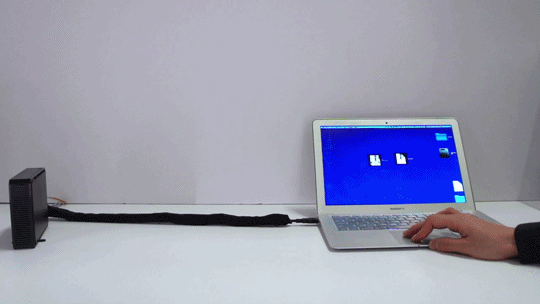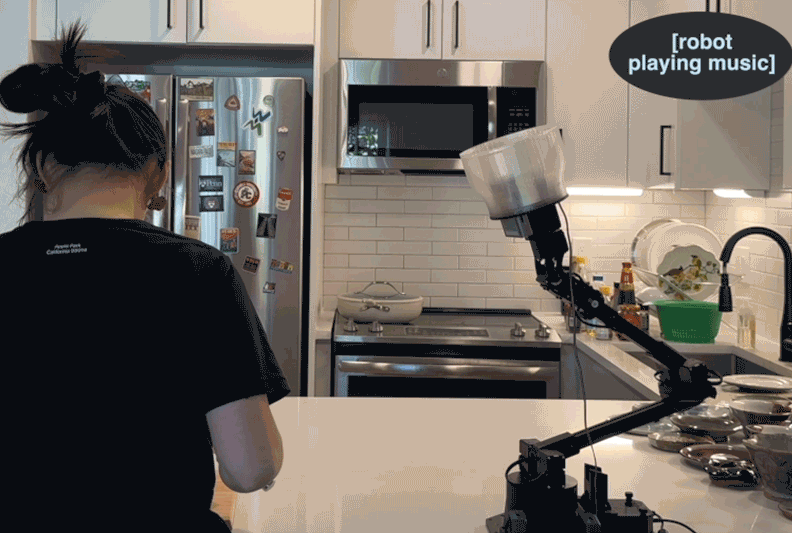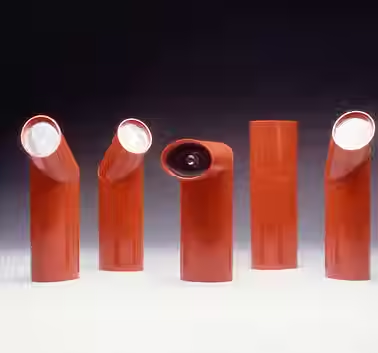
Nostalgorithms (2025)
Nostalgorithms is an autonomous lamp that reacts in unanticipated ways that users do not expect from modern smart electronics, such as avoiding to satisfy the user's needs.
Significance
This project is a study of the interaction between the user and the object by putting a personality into the object—the lamp—(such as avoidance) to better understand the user experience by bringing out different emotions from the user.
Smart technology aims to make everyday tasks more efficient, convenient, and personalized by using sensors, software, and connectivity to collect data, learn from patterns, and respond. It helps automate routines, optimize energy and resource use, and connect devices, ultimately enhancing user experience and decision-making across areas like homes, health, and industry.
The Nostgalorithms questions this idea.

Research


LineFORM by MIT Media Lab
LineFORM is a shape-changing interface developed by the Tangible Media Group at MIT Media Lab. It explores how a robotic linear form, a flexible robotic “line," can shift its shape to communicate, assist, or physically interact with humans. It functions both as a display and as a physical interface, morphing to become a stylus, a wristband, a lamp, or even a reactive gesture-based communicator.
What makes LineFORM compelling is that it treats form and movement as language—turning shape into a medium for expression. It breaks away from static design and proposes that objects can adapt, emote, and speak through motion.


ELEGNT: Prototype robot lamp developed by Apple engineers and scientists that was inspired by Pixar's mascot.
Apple’s research team revealed a charming concept, a Pixar-style robotic lamp prototype combining an LED light, camera, speaker, and projector. It’s designed to interact expressively such as dancing to music, reminding users to drink water by nudging a glass, checking the weather by “looking” out a window, and displaying playful emotions like faux sadness. In experiments, this “Expressive” version outperformed a purely functional model, suggesting that engaging movement and personality enhance user experience. Though still a research prototype from Apple’s Machine Learning division, it offers a tantalizing preview of future home robots—possibly launching around 2026–2027 at roughly $1,000.




Anglepoise Type 75 Desk Lamp
Polyphemus Flashlight by Emilio Ambasz (1983)
Radilum Ettorino Table Lamp
Artemide Tizio Desk Lamp
Who is the subject and what is the object?
The lamp and the user can interchangeably become the subject and object.
How should the user interact with the lamp?
User enters room and approaches the lamp
01
Curiosity
02
Lamp detects movement
Surprise
03
Lamp begins to move away (avoidance behavior)
Playfulness
04
User chases or follows lamp out of curiosity
Excitement
05
Lamp accelerates and changes direction
More people surround the lamp, it becomes 'cornered'
06
Confusion / Tension
07
Lamp gradually slows and stops
Slight Disappointment
08
Lamp remains still until space clear
Pause
09
When alone again, lamp resumes random wandering





Journaling
Here is a glimpse of the journaling and documentation I completed while building Nostalgorithms. It is a compilation of different ideation sketches and technical processes.
Documentation
Prototyping
This is my initial prototype for Nostalgorithms. I built the working chassis with components such as DC motors, motor drivers, and Arduino--then taped the lamp made with foam board on top of the chassis. I attached all the parts together using tape and a hot glue gun.
The robot avoids people using ultrasonic sensors, and the lamp rotates in two directions (left and right) through 180-degree servos. If you were to approach the robot, the robot would turn away by sensing the person front and back and rotate accordingly. If two people were close enough to the robot from all directions, it would stay still.


3D Modeling
This is the 3D model of the lamp design I created on Fusion 360. I researched many different types of lamps to discover what would be the best design choice to reflect the robot's personality. With the cone shaped head where the circular LED light belongs, it would leave an impression on the user that it is directly looking at them like an eye.
Prototyping II
On the bottom is the second prototype and the finished 3D-printed result of the lamp design. It holds two servos and with a hollow inside so that the wires connected to the LED light can be fed through. The color I selected for the lamp reflects the color of the chassis so that the robot looks holistic.

Final Product



